|
Books Should Be Free Loyal Books Free Public Domain Audiobooks & eBook Downloads |
|
|
Books Should Be Free Loyal Books Free Public Domain Audiobooks & eBook Downloads |
|
Historical Fiction |
|---|
|
Book type:
Sort by:
View by:
|
By: Deborah Alcock (1835-1913) | |
|---|---|
 Spanish Brothers
Spanish Brothers
The daughter of a minister, Deborah Alcock wrote novels on a Christian theme. The Spanish Brothers is set in the sixteenth century and deals with Protestant martyrdom during the Spanish Inquisition. Follow the fortunes of brothers Juan and Carlos as they face the trials and pressures of remaining true to their faith despite hardship, imprisonment, torture and even the agonizing deaths of those dear to them. | |
By: Earl Reed (1863-1931) | |
|---|---|
 Tales of a Vanishing River
Tales of a Vanishing River
The background of this collection of sketches and stories is the country through which flowed one of the most interesting of our western rivers before its destruction as a natural waterway. This book is not a history. It is intended as an interpretation of the life along the river that the author has come in contact with during many years of familiarity with the region. Names of places and characters have been changed for the reason that, while effort has been made to adhere to artistic truth, literary liberties have been taken with facts when they have not seemed essential to the story. - Summary by Earl H. Reed | |
By: Edgar Rice Burroughs (1875-1950) | |
|---|---|
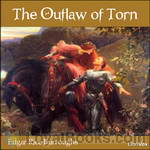 The Outlaw of Torn
The Outlaw of Torn
The story is set in 13th century England and concerns the fictitious outlaw Norman of Torn, who purportedly harried the country during the power struggle between King Henry III and Simon de Montfort. Norman is the supposed son of the Frenchman de Vac, once the king's fencing master, who has a grudge against his former employer and raises the boy to be a simple, brutal killing machine with a hatred of all things English. His intentions are partially subverted by a priest who befriends Norman and teaches him his letters and chivalry towards women... | |
By: Edna Lyall (1857-1903) | |
|---|---|
 Derrick Vaughan, Novelist
Derrick Vaughan, Novelist
| |
By: Edward Everett Hale (1822-1909) | |
|---|---|
 The Man Without a Country and Other Tales
The Man Without a Country and Other Tales
| |
 Man Without A Country And Other Tales
Man Without A Country And Other Tales
Edward Everett Hale (1822 – 1909) was an American author, historian and Unitarian clergyman. Hale first came to notice as a writer in 1859, when he contributed the short story "My Double and How He Undid Me" to the Atlantic Monthly. He soon published other stories in the same periodical. His best known work was "The Man Without a Country", published in the Atlantic in 1863 and intended to strengthen support in the Civil War for the Union cause in the North. Though the story is set in the early 19th century, it is an allegory about the upheaval of the American Civil War... | |
By: Edward George Bulwer-Lytton (1803-1873) | |
|---|---|
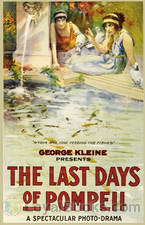 Last Days of Pompeii
Last Days of Pompeii
The Last Days of Pompeii, a novel by Edward George Bulwer-Lytton tells the love story of the Greeks Glaucus and Ione who were living in Pompeii when Mt. Vesuvius erupted and destroyed the city. But aside from telling their romance, the book is also full of insights about the decadent lifestyle of the Romans during the later part of their empire’s history. The different characters in the story represent the different civilizations which they come from. Glaucus, the main protagonist in the novel was portrayed as a handsome Greek nobleman... | |
By: Edward Irenaeus Prime-Stevenson (1858-1942) | |
|---|---|
 White Cockades: An Incident of the "Forty-Five"
White Cockades: An Incident of the "Forty-Five"
In the aftermath of the 1745 Jacobite uprising, the young Andrew Boyd meets a fugitive from the redcoats, a man whom Andrew soon grows to admire. Andrew and his father take the man in, but then the redcoats arrive to search the house... Besides being a historical adventure this reads, to a modern reader, as a sweet gay romance, though it's not explicit. Indeed the author was gay himself and anonymously recommended his own book as an example of homoerotic fiction in The Intersexes, his 700-page defense of homosexuality under another pen name. - Summary by Elin | |
By: Edward M. Forster (1879-1970) | |
|---|---|
 Where Angels Fear to Tread
Where Angels Fear to Tread
On a journey to Tuscany with her young friend and traveling companion Caroline Abbott, widowed Lilia Herriton falls in love with both Italy and a handsome Italian much younger than herself, and decides to stay. Furious, her dead husband’s family send Lilia’s brother-in-law to Italy to prevent a misalliance, but he arrives too late. Lilia marries the Italian and in due course becomes pregnant again. When she dies giving birth to her child, the Herritons consider it both their right and their duty to travel to Monteriano to obtain custody of the infant so that he can be raised as an Englishman. | |
By: Elizabeth Gaskell (1810-1865) | |
|---|---|
 Sylvia's Lovers
Sylvia's Lovers
The novel begins in the 1790s in the coastal town of Monkshaven. Sylvia Robson lives with her parents on a farm, and is loved by her rather dull Quaker cousin Philip. She, however, meets and falls in love with Charlie Kinraid, a sailor on a whaling vessel, and they become engaged, although few people know of the engagement. But Charlie gets press-ganged and have to leave without a word. | |
By: Émile Gaboriau (1832-1873) | |
|---|---|
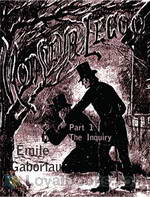 Monsieur Lecoq: The Inquiry
Monsieur Lecoq: The Inquiry
Monsieur Lecoq is a captivating mystery, historical and love story : Around 11 o'clock, on the evening of Shrove Sunday 18.., close to the old Barrière d'Italie, frightful cries, coming from Mother Chupin's drinking-shop, are heard by a party of detectives led by Inspector Gévrol. The squad runs up to it. A triple murder has just been committed. The murderer is caught on the premises. Despite Gévrol's opinion that four scoundrels encountered each other in this vile den, that they began to quarrel, that one of them had a revolver and killed the others, Lecoq, a young police agent, suspects a great mystery... | |
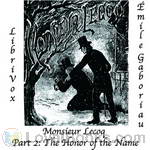 Monsieur Lecoq Part 2: The Honor of the Name
Monsieur Lecoq Part 2: The Honor of the Name
Monsieur Lecoq is a captivating mystery, historical and love story: Around 11 o'clock, on the evening of Shrove Sunday 18.., close to the old Barrière d'Italie, frightful cries, coming from Mother Chupin's drinking-shop, are heard by a party of detectives led by Inspector Gévrol. The squad runs up to it. A triple murder has just been committed. The murderer is caught on the premises. Despite Gévrol's opinion that four scoundrels encountered each other in this vile den, that they began to quarrel, that one of them had a revolver and killed the others, Lecoq, a young police agent, suspects a great mystery... | |
By: Émile Zola (1840-1902) | |
|---|---|
 The Fat and the Thin
The Fat and the Thin
| |
 Germinal (English)
Germinal (English)
This epic about French coal miners and the burgeoning labor movement is considered one of Zola's finest novels. - Summary by Matt Pierard | |
 Fortune of the Rougons
Fortune of the Rougons
The Fortune of the Rougons , originally published in 1871, is the first novel in Émile Zola's monumental twenty-volume series Les Rougon-Macquart. In his introduction Zola indicates that this series is intended to demonstrate the interaction of heredity and environment along the lines of natural selection and evolution. While Zola's metascience is questionable, this novel is successful in its analysis of the interaction of momentous social and political events and the everyday lives and aspirations of a provincial society... | |
 Ladies' Paradise
Ladies' Paradise
Zola's original French publication, Au Bonheur des Dames , published 1882, is the eleventh novel in his Rougon-Macquart series. This English translation by Ernest Alfred Vizetelly, was published in 1886. It's a glitzy, fast paced Parisian drama depicting life at the world's first department store, revealing its many innovative marketing concepts, fashion, glamour, lust, greed, courage, deception, human foibles, and the vision and financial risk-taking that led to a world transformation in shopping -- one that set all the little shop keepers on their heads... | |
By: Emma Orczy (1865-1947) | |
|---|---|
 The League of the Scarlet Pimpernel
The League of the Scarlet Pimpernel
Written by Baroness Orczy and first published in 1919, The League of the Scarlet Pimpernel is a sequel book to the classic adventure tale, The Scarlet Pimpernel. The book consists of eleven short stories about Sir Percy Blakeney’s exploits in rescuing various aristos and French citizens from the clutches of the guillotine. The stories which are listed below, are set in 1793 but appear in no particular order. They occasionally refer to events in other books in the series. | |
By: Eugène Sue (1804-1857) | |
|---|---|
 Gold Sickle
Gold Sickle
The Gold Sickle; or, Hena the Virgin of the Isle of Sen. A Tale of Druid Gaul is the first part of Eugène Sue's The Mysteries of the People; or, History of a Proletarian Family Across the Ages, in which he intended to produce a comprehensive "universal history," dating from the beginning of the present era down to his own days. Sue's own socialist leanings made this history that of the "successive struggles of the successively ruled with the successively ruling classes". In the first volume we meet the Gallic chief Joel, whose descendants will typify the oppressed throughout the suite of novels... | |
By: Eva March Tappan (1854-1930) | |
|---|---|
 World’s Story Volume III: Egypt, Africa and Arabia
World’s Story Volume III: Egypt, Africa and Arabia
This is the third volume of the 15-volume series of The World’s Story: a history of the World in story, song and art, edited by Eva March Tappan. Each book is a compilation of selections from prose literature, poetry and pictures and offers a comprehensive presentation of the world's history, art and culture, from the early times till the beginning of the 20th century. Topics in Part III include Egypt, Northern, Western and Central Africa, South Africa and Arabia. - Summary by Sonia Cast list for The Death of Cleopatra: Dolabella: Tomas Peter Charmian: Monika M... | |
 World’s Story Volume II: India, Persia, Mesopotamia and Palestine
World’s Story Volume II: India, Persia, Mesopotamia and Palestine
This is the second volume of the 15-volume series of The World’s Story: a history of the World in story, song and art, edited by Eva March Tappan. Each book is a compilation of selections from prose literature, poetry and pictures and offers a comprehensive presentation of the world's history, art and culture, from the early times till the beginning of the 20th century. Topics in Part II include India, Siam, Afghanistan, Persia, Mesopotamia and Palestine. - Summary by Sonia Cast list for Sakoontala, or the lost ring: King: Tomas Peter First Attendant: Eva Davis Second Attendant: TJ Burns Child: lorda Sakoontala: Monika M... | |
 World’s Story Volume I: China, Japan and the Islands of the Pacific
World’s Story Volume I: China, Japan and the Islands of the Pacific
This is the first volume of the 15-volume series of The World’s Story: a history of the World in story, song and art, edited by Eva March Tappan. Each book is a compilation of selections from prose literature, poetry and pictures and offers a comprehensive presentation of the world's history, art and culture, from the early times till the beginning of the 20th century. Topics in Part I include China, Korea, Japan and the Islands of the Pacific. - Summary by Sonia Cast list for The Sorrows of... | |
 World’s Story Volume IV: Greece and Rome
World’s Story Volume IV: Greece and Rome
This is the fourth volume of the 15-volume series of The World’s Story: a history of the World in story, song and art, edited by Eva March Tappan. Each book is a compilation of selections from prose literature, poetry and pictures and offers a comprehensive presentation of the world's history, art and culture, from the early times till the beginning of the 20th century. Topics in Part IV include Greek mythology, the classical Greek period and the Rise and Fall of the Roman Empire. - Summary by Sonia Cast list for The sacrifice of Iphigenia: Iphigenia: Devorah Allen / Chorus: alanmapstone / Messenger: Foon / Clytemnestra: Monika M... | |
 World’s Story Volume V: Italy, France, Spain and Portugal
World’s Story Volume V: Italy, France, Spain and Portugal
This is the fifth volume of the 15-volume series of The World’s Story: a history of the World in story, song and art, edited by Eva March Tappan. Each book is a compilation of selections from prose literature, poetry and pictures and offers a comprehensive presentation of the world's history, art and culture, from the early times till the beginning of the 20th century. Topics in Part V include Italian painters and poets, the French Revolution, the Spanish Inquisition and Portuguese explorers. - Summary by Sonia Cast list for A supposed street scene in Verona in the fourteenth century: Gregory: Nemo / Sampson: Tomas Peter / Abraham: Monika M... | |
 World’s Story Volume VII: Germany, the Netherlands and Switzerland
World’s Story Volume VII: Germany, the Netherlands and Switzerland
This is the seventh volume of the 15-volume series of The World’s Story: a history of the World in story, song and art, edited by Eva March Tappan. Each book is a compilation of selections from prose literature, poetry and pictures and offers a comprehensive presentation of the world's history, art and culture, from the early times till the beginning of the 20th century. Topics in Part VII include the stories from the Nibelungen saga of the Germans, masterpieces of the Dutch Painters and the famous apple-shooting episode from Schiller's drama William Tell... | |
 World’s Story Volume VI: Russia, Austria-Hungary, the Balkan States and Turkey
World’s Story Volume VI: Russia, Austria-Hungary, the Balkan States and Turkey
This is the sixth volume of the 15-volume series of The World’s Story: a history of the World in story, song and art, edited by Eva March Tappan. Each book is a compilation of selections from prose literature, poetry and pictures and offers a comprehensive presentation of the world's history, art and culture, from the early times till the beginning of the 20th century. Topics in Part VI include the Russian Empire, the fights for independence in Hungary and the Balkan states and the politics of early Turkey... | |
By: Fanny Burney (1752-1840) | |
|---|---|
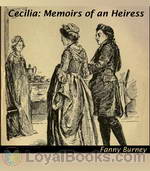 Cecilia: Memoirs of an Heiress
Cecilia: Memoirs of an Heiress
The plot of Cecilia revolves around the heroine, Cecilia Beverley, whose inheritance from her uncle comes with the stipulation that she find a husband who will accept her name. This proves impossible, and she gives up her fortune to marry for love. Jane Austen referred to Cecilia and other novels in her novel, Northanger Abbey: “’And what are you reading, Miss — ?’ ‘Oh! It is only a novel!’ replies the young lady, while she lays down her book with affected indifference, or momentary shame... | |
By: Ferdinand Schmidt (1816-1890) | |
|---|---|
 Gudrun
Gudrun
The charming story of “Gudrun” is a romance of the old heroic period, written by some unknown poet of Austria or Bavaria in the thirteenth century. Next to the "Nibelungen Lied," it is the most important of the German epic poems...The same elemental passions are depicted. The men are brave, vigorous heroes, rejoicing in battle and feats of prowess; the women are beautiful, constant, and courageous. There are many fine delineations of character in the original, as well as vigorous sketches of northern scenery... | |
By: Fergus Hume (1859-1932) | |
|---|---|
 Bishop's Secret
Bishop's Secret
| |
By: Florence Morse Kingsley (1859-1937) | |
|---|---|
 Stephen: A Soldier of the Cross
Stephen: A Soldier of the Cross
This is a unique sequel to the book Titus: A Comrade of the Cross written in a very different style, though none the less memorable, full of excitement and suspense! The author combines several stories together with great skill and ease, creating tension, making you wonder how things can play out until the very climax is reached. A blind girl and her brother just barely surviving in Egypt, threatened by the slave trade, almost without hope, one day hear about miracles happening in Jerusalem. They fly for their lives, hoping against hope and when they finally get there they find themselves at the foot of the cross. Is it too late? Was all their suffering for nothing? | |
 Paul: A Herald of the Cross
Paul: A Herald of the Cross
This is an exciting sequel to the earlier books Titus: A Comrade of the Cross and Stephen: A Soldier of the Cross. It tells the story of the apostle Paul, from his conversion through his imprisonment. | |
By: Florence Roma Muir Wilson (1891-1930) | |
|---|---|
 Death of Society: A Novel of Tomorrow
Death of Society: A Novel of Tomorrow
A weary survivor of the Great War, Major Rane Smith wanders in a great ennui amidst the mystical beauties of the fjords of Norway after the War, seeking a spiritual renewal. Deep in the forest he stumbles fatefully upon the strange, almost elvish home of Karl Ingman, an iconoclastic old Ibsen scholar. There Major Smith meets Ingman's two beautiful young daughters and his eldritch wife Rosa, entering into long days of profound dialogue with each member of the family. A rare and exquisite gem of... | |
By: Ford Madox Ford (1873-1939) | |
|---|---|
 The Fifth Queen
The Fifth Queen
The Fifth Queen trilogy is a series of connected historical novels by English novelist Ford Madox Ford. It consists of three novels, The Fifth Queen; And How She Came to Court (1906), Privy Seal (1907) and The Fifth Queen Crowned (1908), which present a highly fictionalized account of Katharine Howard's marriage to King Henry VIII. | |
By: Forrest Crissey (1864-1943) | |
|---|---|
 Tattlings of a Retired Politician
Tattlings of a Retired Politician
"The letters of Hon. William Bradley, Ex-Governor and former veteran of practical politics, written to his friend and protege Ned who is still busy 'carving a career back in the old state.'" This is a novel filled with humorous political anecdotes by the main character, the Honorable William Bradley, told for the benefit of his protege, Ned. It conveys a sense of the ironic and humorous side of politics in Washington and back in their home state. | |
By: Frances Burney (1752-1840) | |
|---|---|
 The Wanderer
The Wanderer
This is the fourth and final novel by Fanny Burney, the author of Evelina, Cecilia, and Camilla. "Who is "Miss Ellis?" Why did she board a ship from France to England at the beginning of the French revolution? Anyway, the loss of her purse made this strange "wanderer" dependent upon the charity of some good people and, of course, bad ones. But she always comforts herself by reminding herself that it's better than "what might have been..." This is not only a mystery, not at all. It's also a romance which reminds readers of novels by Jane Austen... | |
By: Frances E. W. Harper (1825-1911) | |
|---|---|
 Iola Leroy
Iola Leroy
This is the story of Iola Leroy, a free-born, mixed-race woman who passed as white. Her true racial identity eventually discovered, she was kidnapped and sold into slavery. Later freed by the Union Army, she journeyed to find others of her family who had been disunited from each other and strewn across the south by the forces of slavery. In the process she also struggled to improve the economic and social station of African Americans. Iola Leroy is a story about race and gender roles during the antebellum and post-Civil War eras, "passing" and the associated socio-political consequences. | |
By: Frances Hodgson Burnett (1849-1924) | |
|---|---|
 A Lady of Quality
A Lady of Quality
Set in late 1600's England, the story follows the life of a woman living an unconventional life. The loves of her life and all of its ups and downs are included. | |
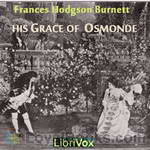 His Grace of Osmonde
His Grace of Osmonde
His Grace of Osmonde, being the portions of that nobleman's life omitted in the relation of his Lady's story presented to the world of fashion under the title of 'A Lady of Quality'Set in late 1600's England, the story follows the life of a woman living an unconventional life. The loves of her life and all of its ups and downs are included. And as above, has more of the story of the Duke who becomes the love of her life. | |
By: Frances Milton Trollope (1779-1863) | |
|---|---|
 Life and Adventures of Jonathan Jefferson Whitlaw
Life and Adventures of Jonathan Jefferson Whitlaw
The novel begins with the arrival of a family staking a claim in the black delta of the Deep South. Whitlaw is a brutish sort who bullies his cowering wife into working herself to death. Shortly after giving birth to a strapping man-child, the wife, Portia, dutifully dies. Her sister-in-law, Clio, takes over the responsibilities of raising the young Whitlaw and tending to every need and whim of her brother. Jonathan Jefferson grows up to be shrewd, conniving, and sly, driven – as Trollope thought most Americans were – by a compulsion for financial success... | |
By: François-René de Chateaubriand (1768-1848) | |
|---|---|
 Atala
Atala
What were the lower Mississippi River, Gulf Coast regions, and Appalachians of North America like in the earliest colonial days? Full of untamed forests, wild animals, nuts, berries, and Indians. Chateaubriand spent many years exploring the area, and this early novella was inspired by his years spent with various Indian tribes, , primarily the Natchez. Amongst these natives, as the story goes, was a blind old patriarch named Chactas, revered for his wisdom and knowledge of the affairs of life, including many years spent learning the ways of Europeans... | |
By: Frank Webb (1828-1894) | |
|---|---|
 Garies and their Friends
Garies and their Friends
The book which now appears before the public may be of interest in relation to a question which the late agitation of the subject of slavery has raised in many thoughtful minds, viz. — Are the race at present held as slaves capable of freedom, self-government, and progress. The author is a coloured young man, born and reared in the city of Philadelphia. This city, standing as it does on the frontier between free and slave territory, has accumulated naturally a large population of the mixed and African race... | |
By: Fred M. White (1859-1935) | |
|---|---|
 Doom of London
Doom of London
Here are six stories, each one describing a disaster afflicting London, that were popularly serialized during 1903-1904 in Pearson’s Magazine. The tales depict a deep freeze and unprecedented snowfall; a heavy, blinding, paralyzing blanket of fog; a widespread killer virus; a fraudulent scheme causing financial panic; a minor electrical accident in a tunnel that spirals into catastrophe; and most of the city’s water supply, reportedly contaminated with deadly bubonic bacillus, puts the population in great fear of plague. Is the word “doom” in the book's title accurate, or is it just hyperbole? | |
By: Frederic Stewart Isham (1866-1922) | |
|---|---|
 Under the Rose
Under the Rose
| |
By: Frederick Marryat (1792-1848) | |
|---|---|
 The Children of the New Forest
The Children of the New Forest
The children of Colonel Beverley, a Cavalier officer killed at the Battle of Naseby are believed to have died in the flames when their house, Arnwood, is burned by Roundhead soldiers. However, they escape and are raised by Joseph Armitage, a gamekeeper in his cottage in the New Forest. The story describes how the children adapt from anaristocratic lifestyle to that of simple cottagers. The children are concealed as the grandchildren of Armitage. Eventually after Armitage’s death, Edward Beverley leaves and works as a secretary for the sympathetic Puritan placed in charge of the Royal land in the New Forest... | |